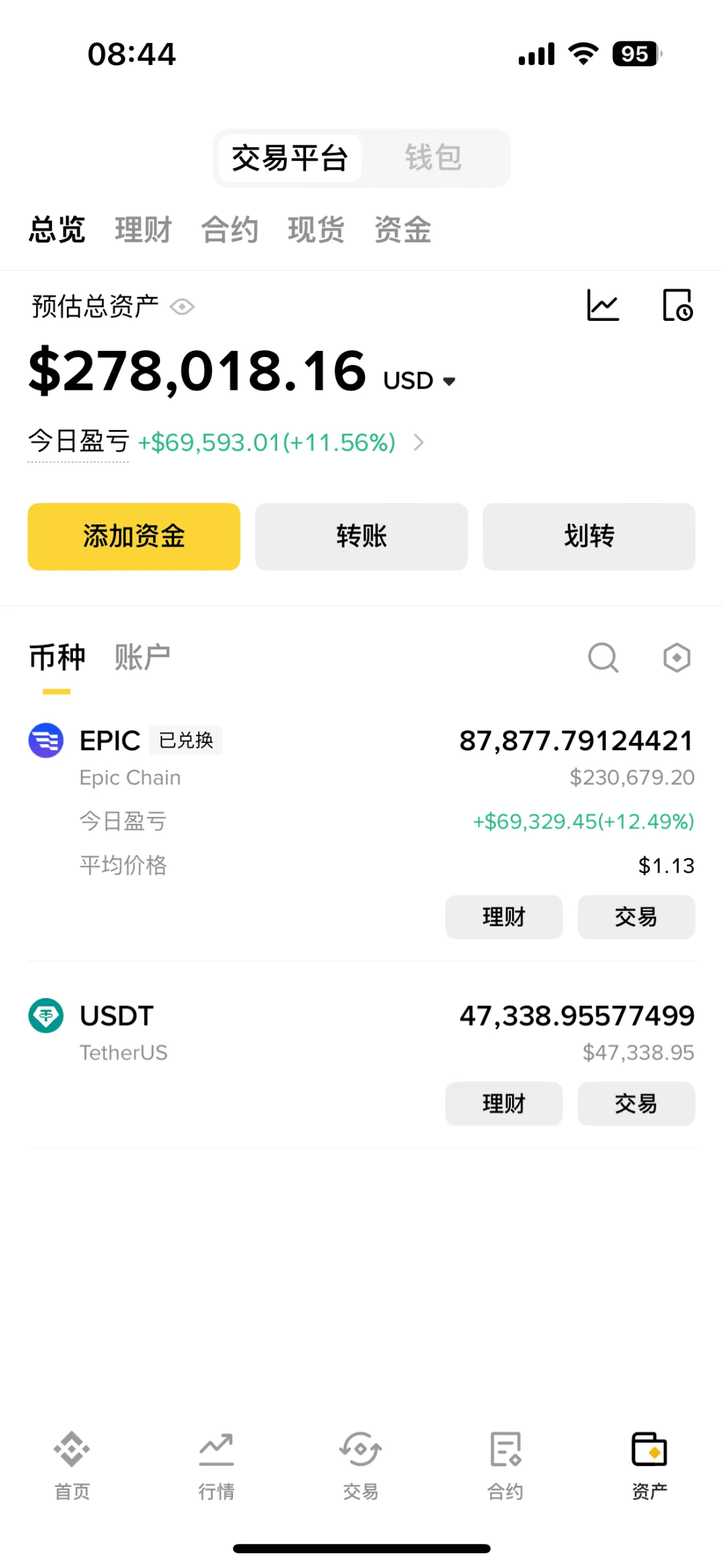Hello everyone, I am 33 years old this year, born in 1992. I entered the market ten years ago, going from $200,000 down to just $30,000, at which point I had almost nothing.
But in these ten years, I relied on a solid trading logic to withstand the bull and bear markets, ultimately growing my account to over $30 million in net assets. It's not about talent or luck, but a methodology that can survive in any market.
The following 11 points are the survival rules in the crypto world I learned from losing money and are what I execute every day. Each one has saved me at critical moments.
01 | When the market is sideways, don't move your account.
If sideways trading lasts more than 5 days, it means a trend change is imminent. When the direction is unclear, the best action is to 'wait and see.'
In 2018, I heavily entered BTC during sideways trading, and ended up with a huge loss of $70,000 after a massive bearish candle.
Experience summary: Sideway periods are testing periods; movement = giving away heads.
02 | For a hot coin, you should exit within three days.
Once a coin becomes a 'popular coin,' it indicates that retail investors have flooded in, and the risk rapidly amplifies.
I once lost 80% of my principal overnight because I couldn't let go of the heat of a popular coin.
The current principle is: when the heat is at its highest, it's precisely when I should exit.
03 | In a strong trend, don't easily exit.
ETH rose from $100 to $2800, and I held on throughout, making $800,000, relying on trend recognition abilities.
Volume + rise + healthy structure is the best signal. When a trend is established, you should have the courage to hold.
04 | When there's a massive bullish candle, first reduce by half.
A massive bullish candle often indicates that the main force is unloading. When BTC surged to $48,000 in 2021, I immediately reduced my position.
The next day, there was indeed a significant pullback, preserving my profits.
High-volume spikes do not mean a rise is imminent; they often signal a correction.
05 | Using moving averages well is the simplest risk control method.
I only look at the 20-day moving average; if the price is above it, I hold confidently, and if it's below, I strictly control risk.
Trend trading is essentially about following. It doesn't have to be complicated; a single moving average is enough.
06 | Three things not to do: Don't chase highs, don't jump into lows, and don't act during sideways trading.
This rule can help me avoid dozens of losses each year:
Don't buy at the emotional peak, don't buy at the panic bottom, don't trade in boredom.
Buying low and selling high isn't just talk; it's about surviving through strict rules.
07 | Never be fully invested, always allocate in batches.
Even if you are 100% confident in a coin, only use 10% of your funds to enter.
I never go all-in, nor do I chase a single opportunity. Opportunities are always there, but you need to stay alive.
08 | News is not important; how the market 'responds' is what matters.
If good news doesn't lead to a rise, it indicates that the main force wants to exit; if bad news doesn't lead to a drop, it may have already bottomed.
In trading, it's not about news, but about the market's 'emotional expressions.'
09 | Technical indicators don't need to be many; just enough is good.
MACD looks at trends, Bollinger Bands look at emotions, and volume looks at authenticity.
Indicators are not for predicting the future, but for verifying the present. The fewer, the clearer; the more, the muddled.
10 | Every trade must have a plan.
Trading without a plan basically relies on emotions.
I will clearly outline: entry point, stop-loss level, position increase rules, and take-profit line. Trading is not just getting in; it is executing a task.
11 | Taking profits and losses is the bottom line of discipline.
Stop-loss at 3% down, take half profit at the target, and set a breakeven line for the remaining.
**No stop-loss, and you'll face liquidation; no take-profit, and you'll lose back your gains.** No matter how bullish the market is, you cannot lack an exit mechanism.
Final experience summary:
At my lowest, my account only had $30,000, but I didn't give up, nor did I rely on inspiration to turn things around.
I rely on rules to hold on:
No staying up late, no getting high.
Review every day; don't operate frequently.
Withdraw $100,000 monthly for household expenses, with a steadily growing account.
The crypto world is not an intelligence arena; it's a discipline arena; it's not a technical arena; it's a rhythm arena.
If you want to go far, you need a system that you are willing to execute long-term — these 11 points are my system and the foundational logic that helped me turn nothing into $30 million.

If you are still chasing highs and lows, and frequently facing liquidation, it might be worth saving this article and optimizing execution based on these 11 points step by step.
You don't need talent, just a set of rules that can pull you out of the mire.


